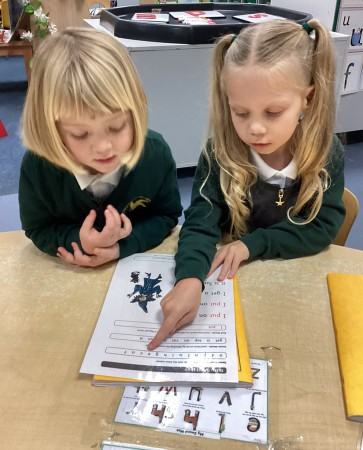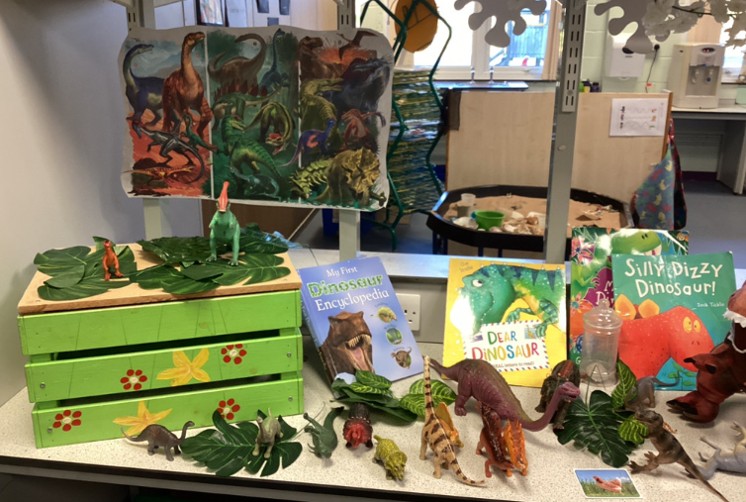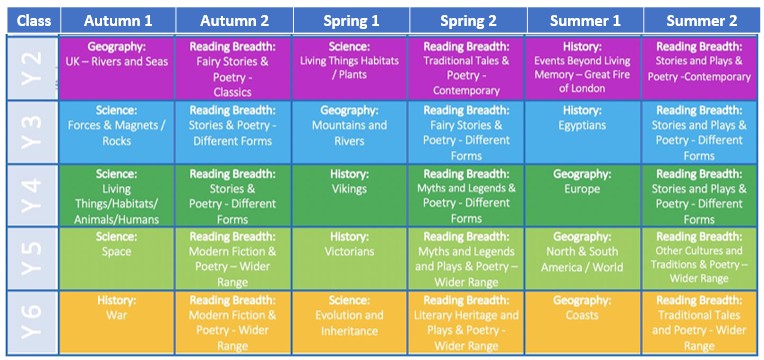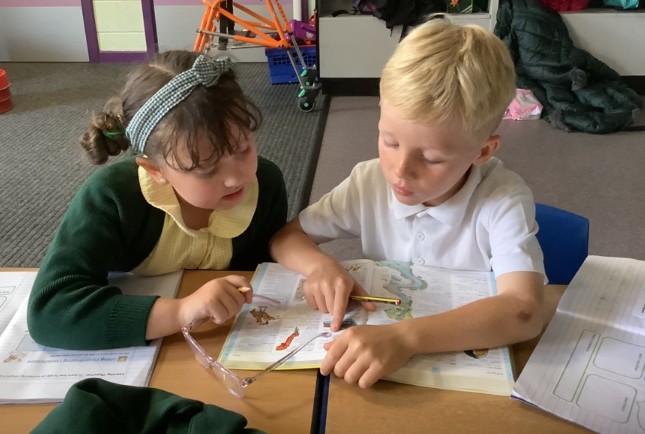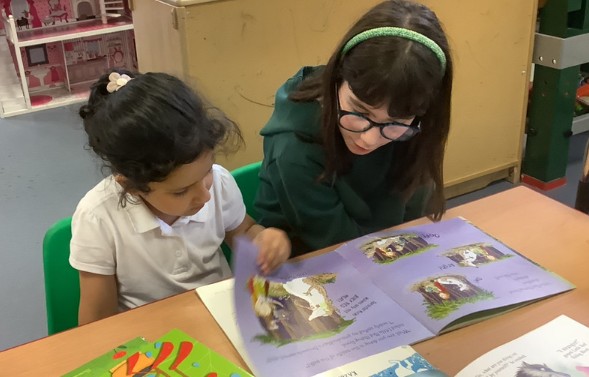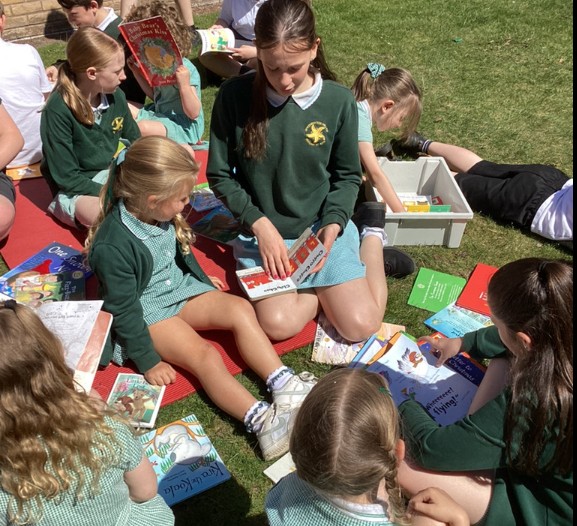Reading
Intent – Reading
At Springwood Heath we ensure that reading is our priority. Through reading in particular, pupils have a chance to develop culturally, emotionally, intellectually, socially, and spiritually. The teaching of English and implementation of reading strategies is embedded across our curriculum.
In line with the national curriculum, we ensure that all pupils:
- read easily, fluently and with good understanding.
- develop the habit of reading widely and often, for both pleasure and information.
- acquire a wide vocabulary, an understanding of grammar and knowledge of linguistic conventions for reading, writing and spoken language.
- appreciate our rich and varied literary heritage
- write clearly, accurately, and coherently, adapting their language and style in and for a range of contexts, purposes, and audiences.
- use discussion in order to learn; they should be able to elaborate and clearly explain their understanding and ideas.
- are competent in the arts of speaking and listening, making formal presentations, demonstrating to others, and participating in debate.
Dedicated events such as World Book Day, author events, reading initiatives, organised through the Liverpool Learning Partnership, and class assemblies are part of our core offer and enrich our love of reading, writing and performing literature.
Implementation (Overviews) Reading
Early Years
|
It is crucial for children to develop a life-long love of reading. Reading consists of two dimensions: language comprehension and word reading. Language comprehension (necessary for both reading and writing) starts from birth. It only develops when adults talk with children about the world around them and the books (stories and non-fiction) they read with them, and enjoy rhymes, poems, and songs together. We use Read Write Inc as structured programme for phonics. Skilled word reading, taught later, involves both the speedy working out of the pronunciation of unfamiliar printed words (decoding) and the speedy recognition of familiar printed words. Writing involves transcription and composition (articulating ideas and structuring them in speech, before writing).
|
Lesson Design |
| Steps to Read provides a clear teaching sequence to reading sessions that explicitly teach reading skills in a cumulative way through evidence-based approaches. The comprehensive units have been constructed so that the entire statutory curriculum for reading is covered from EYFS to Y6.
Lessons follow the evidenced-based approach of: Teacher Read, Teacher Model, Children Practise and Children Apply. |
| Mapping of Knowledge within a unit
Steps to Read units cover either 4 or 5 weeks. The fifth lesson of each week – an extended application session – provides an opportunity for children to apply the skills they have gained in the previous 4 sessions. |
| Impact
How do we know what children have learnt |
|
The Reading Assessment Counts document aids teachers in gaining a deeper understanding of each standard within a year group and the progress children are making across the year. It assists teachers in identifying gaps in learning and therefore informs planning.
Reading for Pleasure At Springwood Heath In EYFS children's reading journeys will begin at Springwood Heath where they will have access to a range of genres, authors and text types in our classroom and main school library. They will be encouraged to show preferences for different book when reading for pleasure and take home books that they have chosen themselves. These books will be shared with parents and family at home to enjoy together alongside their Read Write Inc. books and recorded in their reading diary. This continues in Key Stage One. At home, we ask that parents read with their child or listen to them read daily and comment in the reading diaries about their child’s progress, making the experience fun, engaging and fostering an early love of reading. In Key Stage Two, children will continue to read with an adult in school weekly. As part of the children’s homework, we ask that parents listen to their child and leave a comment in the diary. When listened to in school, adults will aim to ask three questions about vocabulary, retrieval and inference: Vocabulary questions may include 'What does __ mean?' 'Which word is closest to in meaning to__?', Retrieval questions may include 'When did ___ happen?' 'Why did she go to ___?' and Inference questions may include 'How do you know ____? What clues tell you ___?' Reading Buddies
To further encourage children's Reading for Pleasure each class has a buddy class to share books together with. Having older children as reading role models shows real benefits for our younger learners but these shared reading experience's benefit is twofold as they are also encourage our Key Stage 2 readers to use expression, intonation and reading aloud skills to motivate and encourage their buddies.
|
Phonics
At Springwood Heath we follow the 'Read, Write Inc.' phonics programme. The programme develops reading fluency and comprehension, spelling and writing with confidence and teaches children to articulate their ideas and understanding.
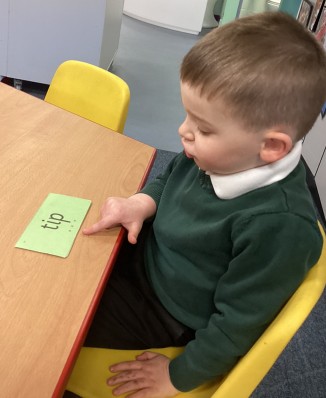
- Every lesson connects with the last and each activity connects with the next: the phonics, the reading and writing.
- Children work in targeted progress groups so they can all participate. No child is ever left behind. They are assessed each half term to ensure the speediest progress.
- Talking is at the heart of every lesson. Children learn the routines that enable them to explain and practise what they’ve been taught with a partner.
- One-to-one tutoring provides quick keep up and long-term support for children with SEND.
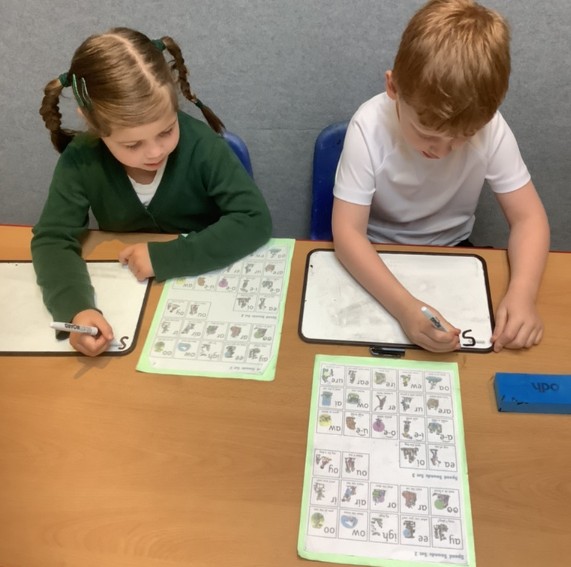
The children are assessed regularly and grouped according to their ability. They will work with a RWI trained teacher or teaching assistant.
When using RWI to read the children will:
- Learn 44 sounds and the corresponding letter/letter groups using simple prompts
- Learn to read words using sound blending (Fred talk)
- Read lively stories featuring words they have learnt to sound out
- Show that they comprehend the stories by answering 'Find It' and 'Prove It'
Writing
When using RWI to write the children will:
- Learn to write the letter/letter groups which represent the 44 sounds
- Learn to write words by saying the sounds and graphemes (Fred fingers)
Talking
When using RWI the children will also work in pairs:
- To answer questions
- To take turns talking and listening to each other
- To give positive praise to each other
Blending
Help your child learn to read words by sounding-blending (Fred talk) eg. c-a-t = cat, sh-o-p = shop. Children learn to read words by blending the letter-sounds that are in the Speed Sounds set.
Help your child to say the pure sounds ('m' not 'muh', 's' not 'suh' etc.) as quickly as they can, and then blend the sounds together to say the whole word.
Read Write Inc Books
Please encourage your child to read though the speed sounds page first, then the green and red words page and then check your child understands the meaning of words on the vocabulary check page, before they start reading the book. Your child will have read this book at least three times before they bring it home. They should be able to read this book with fluency and expression by the time they bring it home and they should have a good comprehension of what the book is about. At the back of the book are find it/prove it questions for you to do with your child.
Finally, don't worry if your child is struggling at first with their sounds and words, they will get there in their own time. If you have time (we know it is very precious!), we would urge you to try and read stories to your child before they go to bed. This will help develop a wider vocabulary which makes a vast difference to their quality of writing but it will also encourage them to enjoy a good story.
